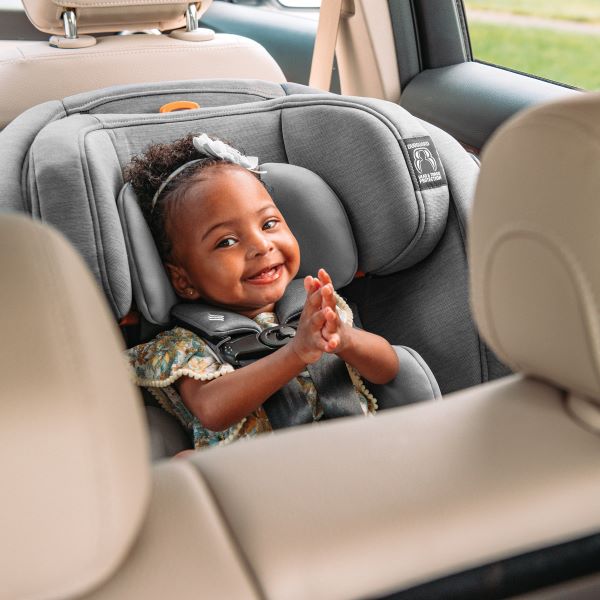Baby on Board, But is Baby Properly Buckled?
Baby on Board, But is Baby Properly Buckled?

A new AAA analysis of five years of government crash data reveals a concerning trend: child seat and booster use declines after a child turns three, despite the continued need for these safety devices. This is alarming, given that more than 100,000 children were injured in car crashes in 2022 alone, according to the National Highway Traffic Safety Administration (NHTSA). As National Child Passenger Safety Week (Sept. 15-21) approaches, AAA and the National Safety Council (NSC) highlight the importance of proper car seat use and offer essential tips to keep young passengers safe on the road.
From 2018 to 2022, over four million children aged 11 and under were involved in car crashes, resulting in 547,000 injuries and nearly 3,000 fatalities. Shockingly, 74% of car seats inspected in 2023 were improperly installed or used, according to the National Digital Car Seat Check Form (NDCF) database.
In 2022, there were 1,129 children killed in traffic crashes nationwide, 32 of which were in New York state alone.
According to data from the NDCF, there are three common misuses: 1) car seat installation is too loose, 2) not using the tether when installing a forward-facing car seat with either the lower anchors or seat belt, and 3) the harness is too loose when securing a child in a car seat.
When used correctly, car seats, booster seats, and seat belts protect young passengers. According to the U.S. Department of Transportation, child restraints reduce fatalities by 71% for infants younger than one and by 54% for children 1 to 4 years old in passenger cars.
“We know parents and caregivers go to great lengths to protect their children, but it's easy to overlook the evolving safety needs,” said Rhonda Shah, Traffic Safety and Advocacy Manager for AAA. “Just like new shoes and clothes, a growing child requires seat adjustments. Traffic safety is central to AAA’s mission, and we are here to help everyone understand what type of child restraint to use and when.”
According to AAA’s analysis, the latest government data reflects a need for parents to ensure they use the correct child restraint system for each growth phase.
• Every child deserves protection. Nearly 4 in 10 (37%) children aged 7-11 killed in a car crash were completely unrestrained. For the youngest children, aged 0-3, 1 in 4 (26%) who were killed were unrestrained. Parents and caregivers are good at getting expert help when children are less than one year old or before birth, but they do not always come back for adjustments as the child ages. According to the NDCF, Child Passenger Safety Technicians inspect about five times the number of rear-facing car seats compared to forward-facing car seats, and 83.5% of those were not used correctly.
• It’s about height, not age. Children are often transitioned out of the appropriate car seats before it is safe. According to the NDCF, 24.9% of children move to booster seats too soon, and 93.6% transition to a seat belt too soon. Many parents may not know that seat belt fit is more about their child’s height than age. Based on their size, some children older than ten years old may benefit from using a booster seat. Most booster seats accommodate children up to a height of 57 inches.
• Find child passenger safety resources by state, including how to get a car seat checked, occupant protection laws, and answers to car seat questions. Click here to learn more.
• Check online virtually. Without local resources, a child's car seat can be checked virtually through an online meeting with National Safety Council staff. Click here to learn more.
Methodology
The statistics on child restraint use in car crashes are based on data compiled by the U.S. Department of Transportation and analyzed by the AAA Foundation for Traffic Safety. Statistics are based on children riding as passengers in cars, minivans, vans, pickup trucks, and SUVs involved in police-reported crashes between 2018 and 2022. For more, visit AAAFoundation.org or find a AAA office near you at AAA.com.
In partnership with AAA and the National Safety Council, Westat researchers examined data submitted to the National Digital Car Seat Check Form (NDCF), a national database of detailed information on car seat inspections performed by certified Child Passenger Safety Technicians (CPSTs). The final dataset used for analysis represents all 50 states and includes 71,808 car seat inspections performed between January 1, 2023, and December 31, 2023.
About AAA
Started in 1902 by automotive enthusiasts who wanted to chart a path for better roads in America and advocate for safe mobility, AAA has transformed into one of North America’s largest membership organizations. Today, AAA delivers exceptional roadside assistance, helps travelers plan their dream vacations and adventures, offers exclusive member discounts and benefits, and provides trusted financial and insurance services – all to enhance the life journey of our 64+ million members across North America, including over 57+ million in the United States. To learn more about all AAA offers or become a member, visit AAA.com.
About the National Safety Council
The National Safety Council is America’s leading nonprofit safety advocate – and has been for 110 years. As a mission-based organization, we work to eliminate the leading causes of preventable death and injury, focusing our efforts on the workplace and roadways. We create a culture of safety to not only keep people safer at work, but also beyond the workplace so they can live their fullest lives.












